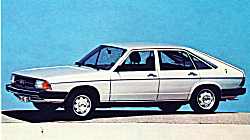(Today, Tesla turbines are used in a variety of industrial applications and remain a favorite of home tinkerers – instructions on how to build one are available all over the Internet.) - See more at: http://blog.hemmings.com/index.php/2010/06/17/nikola-teslas-pound-per-horsepower-engine/?refer=news#sthash.xlFBNJZv.dpuf
While researching the recent post on the Edison-Ford electric car of 1914, it was impossible to avoid coming across references to Nikola Tesla, Thomas Edison’s rival and one-time employee, and the story of Tesla’s own electric car, a Pierce-Arrow that supposedly ran on wireless electricity.
Researching that story turned into a hair-pulling exercise that dead-ended all over the place. While it is true that the lack of proof does not constitute proof itself, it’s hard to argue that Tesla actually pulled electricity out of the air and used it to mysteriously power his Pierce without contemporary newspaper accounts of the exercise, patents supporting such technology or any hard evidence such as, ohIdunno, a Pierce-Arrow chassis with an electric motor and no batteries.
However, more than a decade prior to the alleged Pierce-Arrow incident, Tesla did patent and attempt to drum up interest in another revolutionary alternative power system for automobiles, one that actually made its way to production and was installed on cars, though not as he initially envisioned it.
- See more at: http://blog.hemmings.com/index.php/2010/06/17/nikola-teslas-pound-per-horsepower-engine/?refer=news#sthash.xlFBNJZv.dpuf
In October 1909, Tesla filed his first patent (1,061,142) for what has since become known as the Tesla turbine, a rather simple machine consisting of a stack of closely spaced and smooth-sided discs. The turbine takes advantage of a fluid’s properties of adhesion and viscosity to either pump that fluid with input from an electric motor or to use the motion of that fluid to turn the turbine as an engine.
A few months after filing a subsequent patent on the turbine (1,061,206) in January 1911, he approached the automotive periodicals of the day, touting the turbine’s practicality for automobiles. Both The Automobile and The Horseless Age described the turbine in detail, noting that it could run on any fluid, including steam or gasoline (the latter properly mixed with air and ignited in a preliminary combustion chamber). The Automobile reported that, as a gasoline engine, the turbine could achieve 60 percent efficiency; as a steam engine, it could achieve 95 percent efficiency.
The engine so described, when driven by a mixture of steam and the products of a gaseous fuel burned in an auxiliary chamber showed 110 horsepower on the brake, and more load could have been sustained by it except for the small dimensioned shaft.
- See more at: http://blog.hemmings.com/index.php/2010/06/17/nikola-teslas-pound-per-horsepower-engine/?refer=news#sthash.xlFBNJZv.dpuf
Tesla claimed that a larger engine of the same design installed at the New York Edison Company’s Waterside station made 200hp off of 125 pounds of steam pressure, and that he could develop engines that would weigh between one and four pounds per horsepower. He later revised his estimates upward to 10 horsepower to the pound. However, this target is a little vague, based on the weights of the two engines as reported in The Automobile: 20 pounds for the 110hp engine and 400 pounds for the 200hp engine. The 110hp engine likely weighed 200 pounds (1.82 pounds per horsepower; otherwise it would be 5.5 horsepower per pound). Either way, the focus on weight versus output leads one to believe that Tesla was also eyeballing the engine for use in airplanes, as has been suggested elsewhere.
Tesla told The Horseless Age
that he is at present engaged in the construction of an automobile using the 110 horse power motor with gasoline as the medium of power transmission. He says the car is to be entirely gearless, but as yet is not ready to publish the details of its construction.
However, The Horseless Age wasn’t impressed:
We publish the above because certain of our readers expressed an interest in the motor. Personally we do not believe in turbines for automobiles.
We see no evidence Tesla ever completed that automobile of his and only vague rumors that he tried to sell Henry Ford on the idea. Henry Ford must’ve had an entire department of people engaged in telling frustrated inventors to sod off, judging from the number of them who tried to sell Henry on one idea or another.
Tesla did form a company, The Tesla Propulsion Company, incorporated at $1 million, to build turbines for ships. However, the turbines never worked as they should have – the discs warped at high speed due to poor metallurgy, and they didn’t scale up in size very well.
So Tesla went smaller with the turbines. He had already figured out exactly how fast the turbines turned at certain air speeds, so it was a simple matter to use smaller turbines to turn speedometers. In 1914, he filed a patent on the concept (1,209,359, followed in 1918 by 1,274,816) and issued it to the Waltham Watch Company of Waltham, Massachusetts, which then marketed its Air-Friction Speedometers as invented by Nikola Tesla.It’s important to note that a turbine is not an engine in itself – it’s the power OUTPUT end of a powerplant. A steam turbine needs its boiler, condenser, feed pumps and all the associated ash and trash to produce power, and how much power it produces depends much more on the boiler and condenser capacities than on the turbine design. Second, efficiency claims for the Tesla turbine are absurd. It was extensively tested by several researchers in the 60s, and the results confirmed theoretical predictions of very low efficiency. It must be so, because the momentum transfer mechanism is shear, which is inherently lossy. The chief virtue of the Tesla turbine is its simplicity, which also makes it very robust. It is used in its pump incarnation to pump corrosive liquids and liquids contaminated with grit and other junk that would destroy conventional vaned pumps in a few hours. - See more at: http://blog.hemmings.com/index.php/2010/06/17/nikola-teslas-pound-per-horsepower-engine/?refer=news#sthash.xlFBNJZv.dpuf
- See more at: http://blog.hemmings.com/index.php/2010/06/17/nikola-teslas-pound-per-horsepower-engine/?refer=news#sthash.xlFBNJZv.dpuf




No comments:
Post a Comment